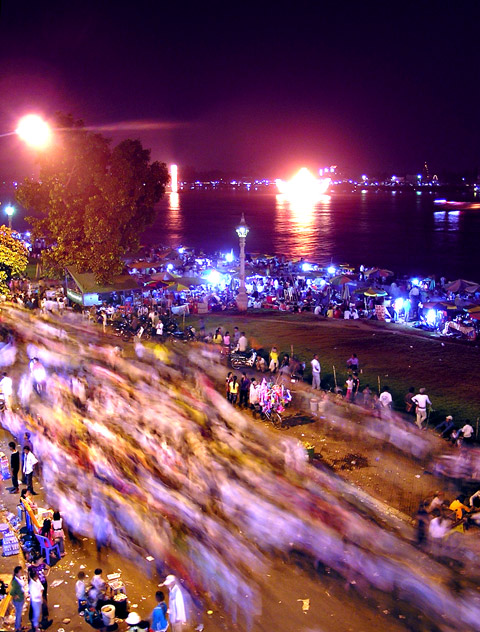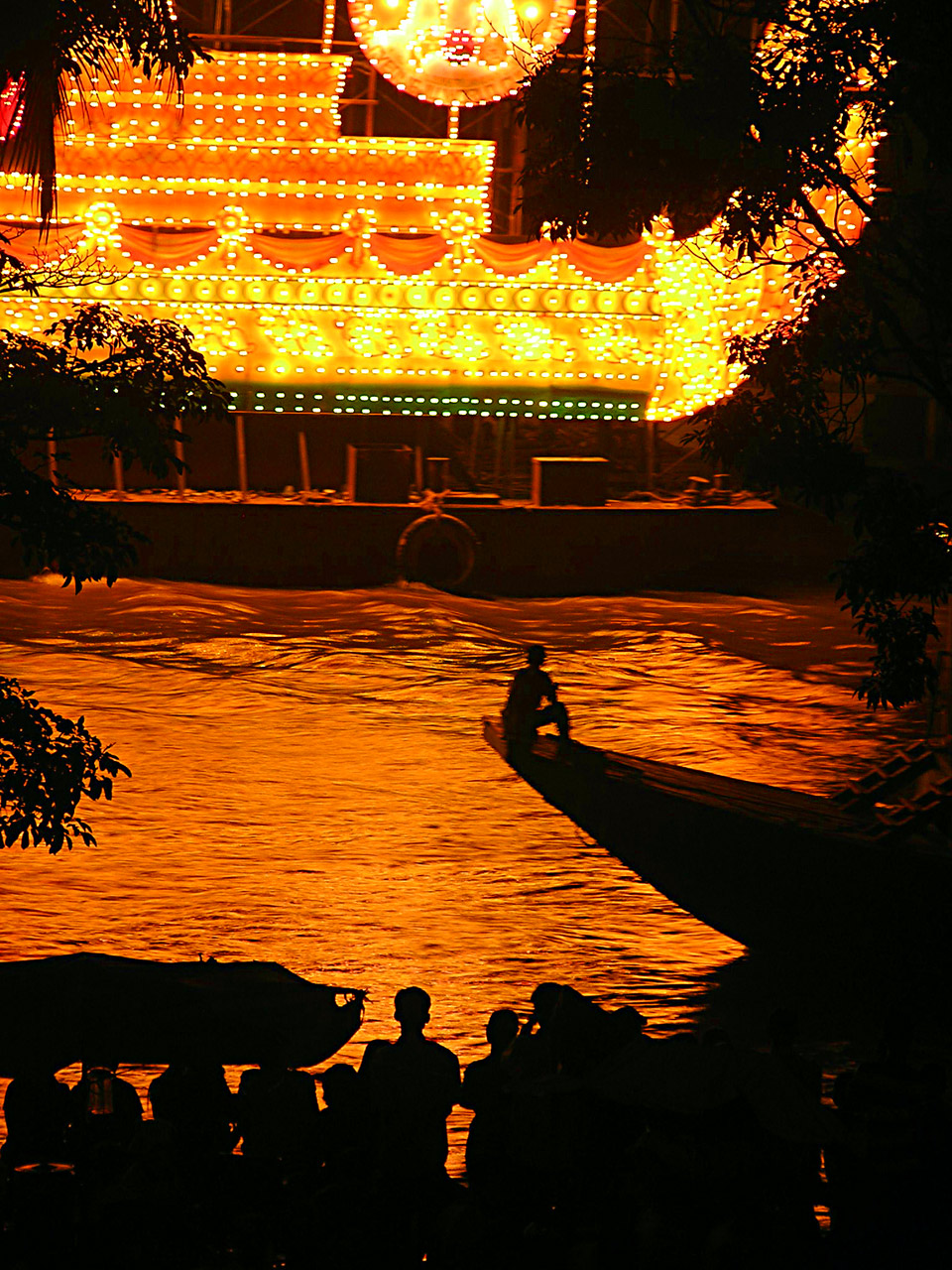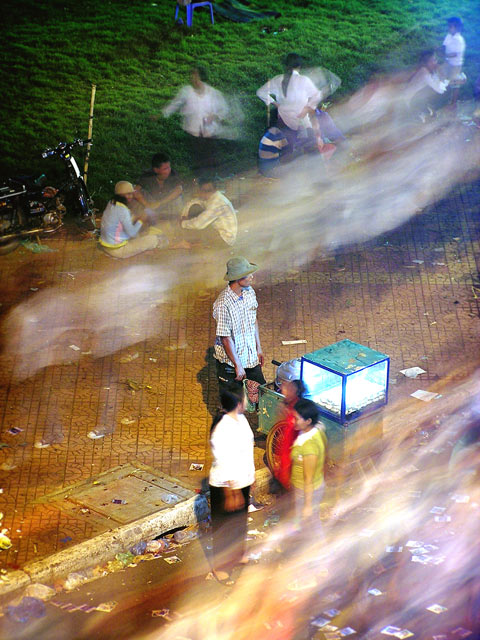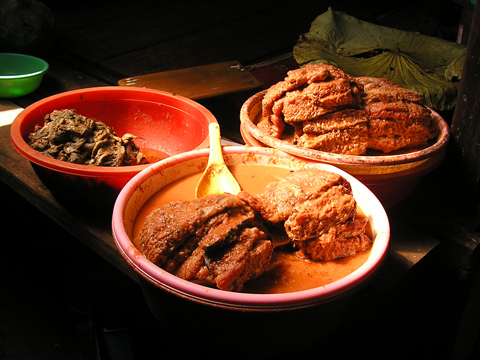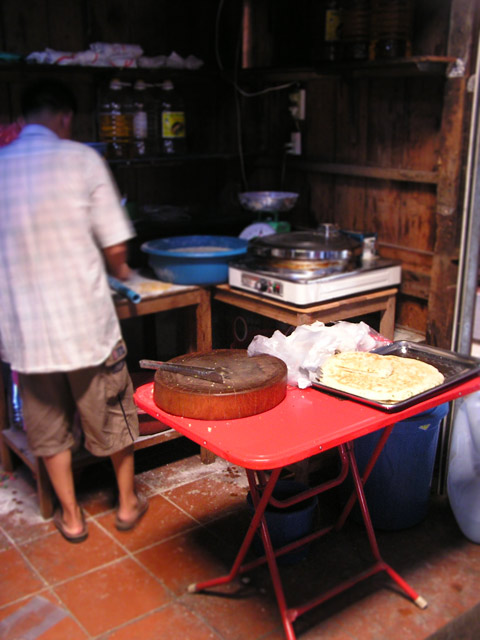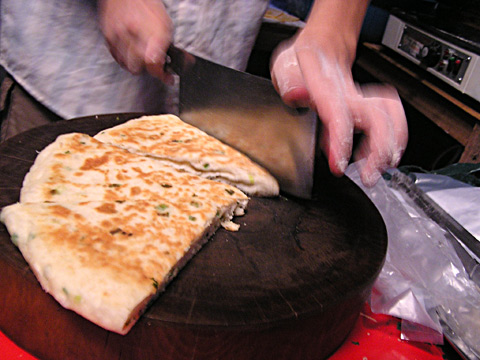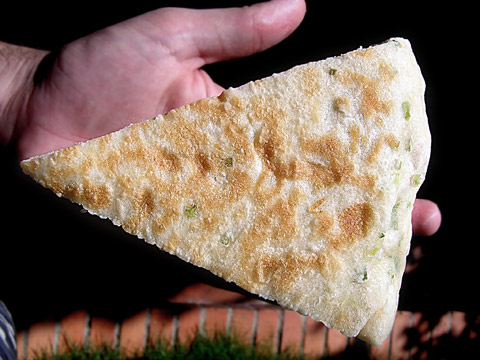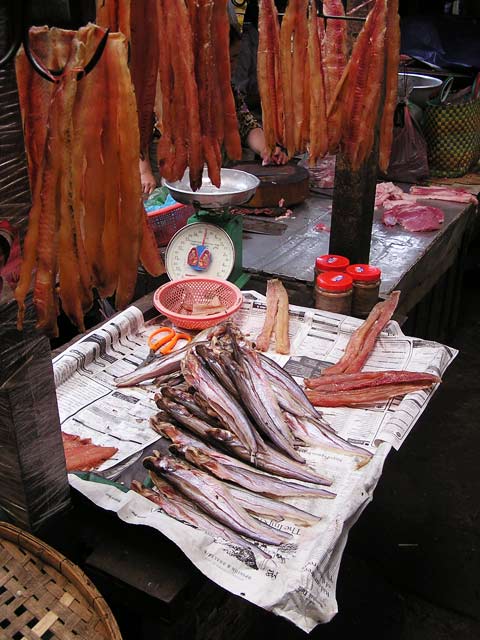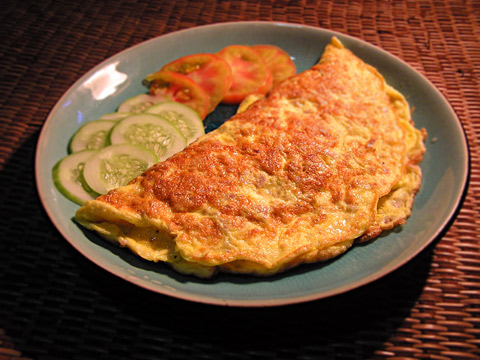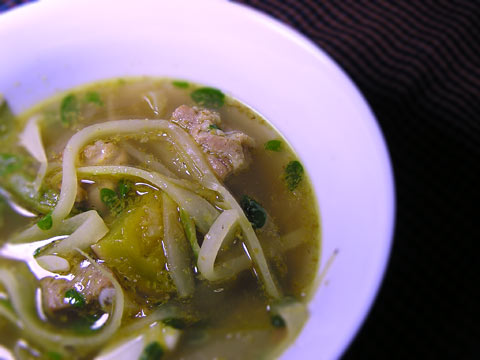
It is sometimes amusing to uphold the myth that I’m leading a fantastically unattainable food lifestyle: up at the crack of dawn to scour Cambodia’s markets for the rarest ingredients, plotting my meals in advance. But it is a myth. I hate the morning and when I’m feeling lazy, Cambodia’s improving supermarkets fill the gap. Lucky for me, Lucky Supermarket has recently introduced packaged fresh ingredient kits for Cambodia’s favourite foods: a few offal and sour soups, tom yam, stuffed bitter melon, and something that I rarely cook myself, samlor karko.
Samlor karko (literally, “stirring soup”) is made in infinite variations depending on the availability of ingredients. It ranges from watery broth to a chunky stew, but the core components are prahok (fermented fish paste); a mix of Cambodia’s more common vegetables: pumpkin, green papaya, green jackfruit, green banana, snake beans, eggplant; a lemongrass heavy spice paste (kroueng); and some random, esoteric leaves that I can’t regularly identify. These things need some serious stirring. I’ve seen versions with every meat imaginable, but tend to prefer pork or chicken.
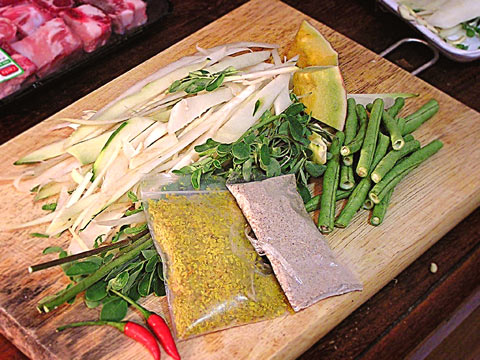
On disengaging the vegies from the cling wrap and polystyrene tray, the Lucky kit seemed a little short on pumpkin and green jackfruit for my liking. No green banana, for which I don’t care; no eggplant. The leafy greenery is mrum leaf (Moringa oleifera) , and the baggies contain kroueng and ground roasted rice.
To make from scratch, if you’re slightly less lazy:
250 grams of pork ribs
1 tbsp prahok
500 grams of vegetables – any mix of green papaya, green banana, green jackfruit sliced thinly; small eggplant or pea eggplant, pumpkin in chunks; snake beans cut into short lengths.
2 small chillies, chopped
6 cups of water
30 grams of lemongrass leaf, 10 grams of lemongrass stem
1 tbsp of krachai
a small piece of fresh turmeric
4 cloves of garlic, peeled
1 tbsp of oil
2 tbsp of ground roasted rice
2 tbsp of palm sugar
2 tbsp of fish sauce
salt to taste
1 cup mrum leaf (Moringa oleifera)
Make the kroueng:
Slice the lemongrass leaf very finely, roughly cut the rhizome, turmeric and garlic, then pound with a mortar and pestle to a paste.
Get your soup on:
Cut the pork ribs into bite-size chunks with a cleaver (or get your butcher to do it for you).
Fry the kroueng and prahok in oil until the oil turns yellowish-green. Add the ribs and brown quietly, taking care not to burn the kroueng.
Add a cup of water, palm sugar, vegetables, and chillies, stirring intermittently for about 15 minutes. Stir in the ground roasted rice powder.
Add the other 5 cups of water, bring to a solid boil. Give the vegies a poke to see if they’re done. Add fish sauce, salt to taste. Add more sugar if necessary.
Add mrum leaf and remove from heat. Serve immediately.
For a vegie version (samla karko sap): Omit anything flavoursome, replace with vegetable-based substitute. Sorry, I meant to say “replace meats with firm tofu or textured vegetable protein, and fish sauce with vege-substitute fish sauce”.
Lucky Supermarket Samla Karko kit (labelled “karkou”): 1000 riel ($US0.25) with about a dollar worth of pre-cut pork ribs.
Cheers to Austin for pointing out the Souper Challenge Blog Event


